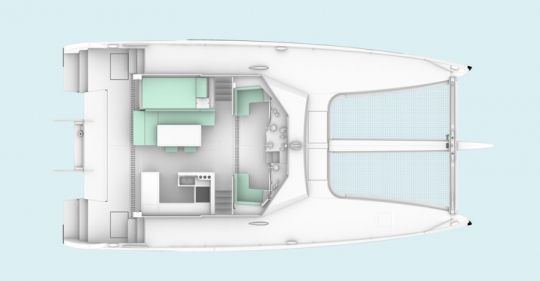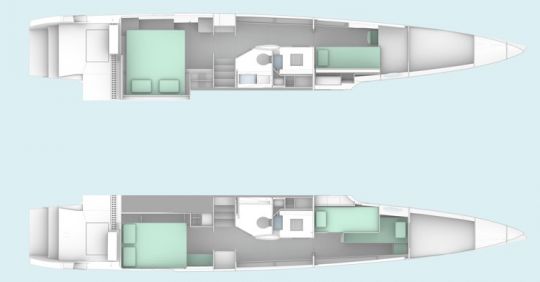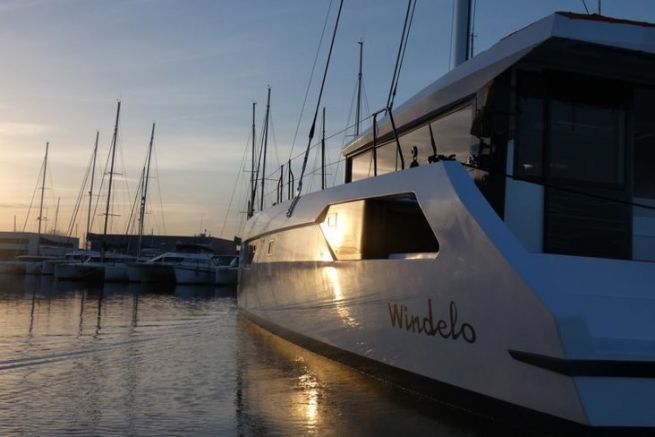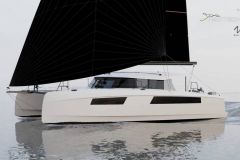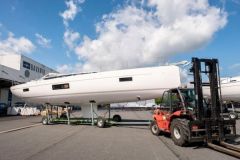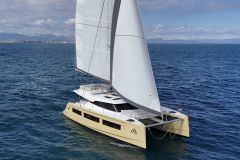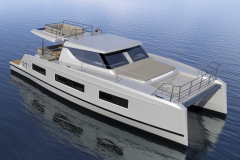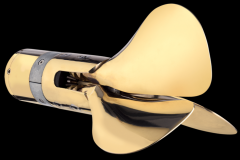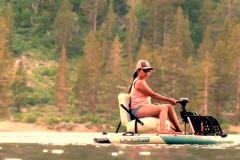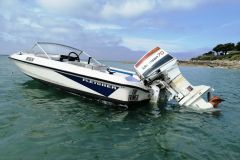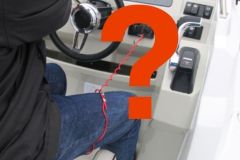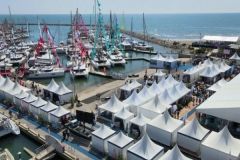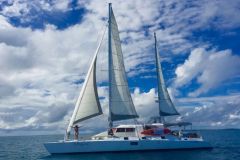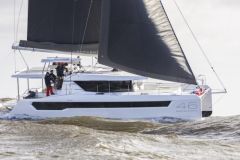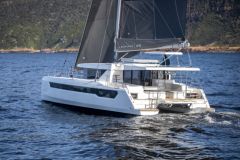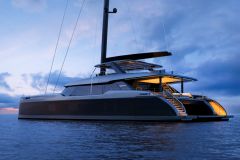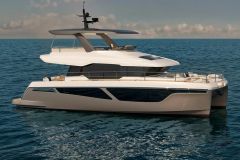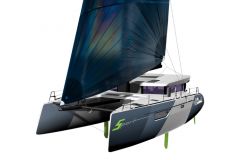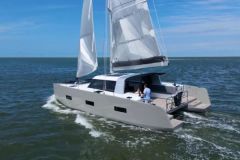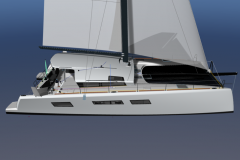The Windelo 50 has just been launched, what are the first lessons learned?
On the water for 1 month, we have been able to make about 10 trips. These are primarily tune-up trips during which we have favored not too strong wind conditions to test all the equipment. The results are very positive.
As soon as the boat was launched, we were able to validate our weight estimate. We respected the one announced by the architects Christophe Barreau and Frédéric Neuman. We wanted a yacht that weighed 11.2 t empty and we measured 12.8 t loaded, ready to sail. This is exactly in our specifications. We also validated that the design of the hulls could support the load without excessive sinking.
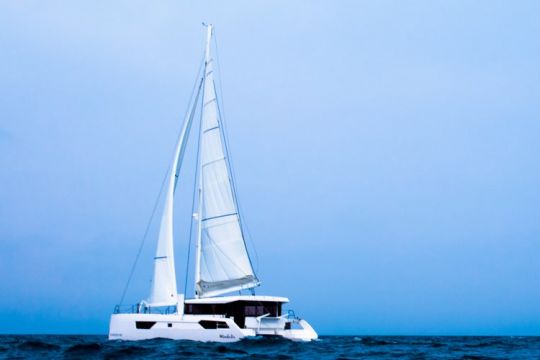
This is a victory for us, because we were vigilant throughout the construction process, weighing each and every part. For example, we refused to install the rear platform, which was 30 kg heavier than the calculated estimate. We rebuilt it lighter. In a construction, the difficulty is to estimate the weight of all the glues, whether it is the one of the partitions or the one of the linings. But we stayed on the right side of the scale.
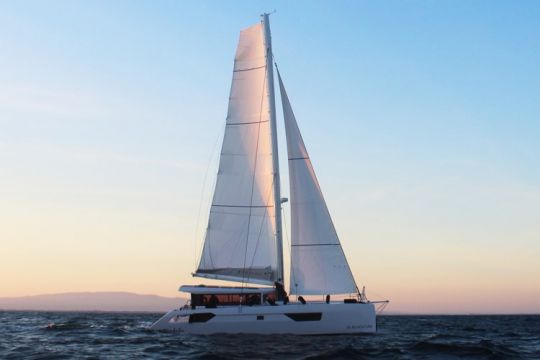
What are the first impressions of the sea trials?
We didn't take too many risks by calling on Christophe Barreau and Frédéric Neuman for the behavior and performance. These two know how to design catamarans! This was confirmed during the first outings where we had up to 18 knots of real wind. The Windelo 50 has a very smooth sea passage. It only raises a small bow wave, which is a good sign, showing that it does not take a strong leeward drag on the hull. The same goes for the low drag at the transom, which shows us a boat that is well in line. But the most pleasant thing is the low propensity to pitch. This boat is really comfortable at sea.
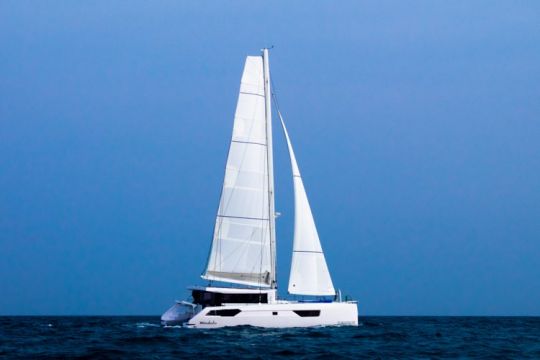
And what about this famous front cockpit?
The position of the cockpit in front of the deckhouse, just at the foot of the mast, changes the whole perception of this catamaran. It totally redistributes the spaces. In port, for maneuvers, you have the impression of steering a much smaller boat than a 50-footer. With the helms in the middle of the boat, you are very close to the bows. The view is superb on the bow and you can easily maneuver along a dock. For a dockside mooring, you have a view on the skirt from the helm by looking through the saloon. It is certain that you are further away than on the models with the bars at the back. But it is enough to place a person in the skirt to appreciate the distance.
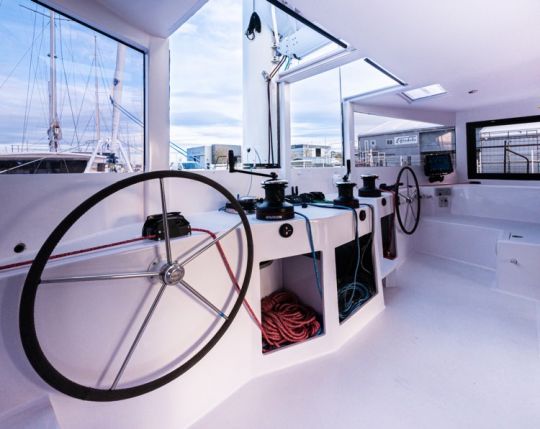
At sea, the situation of this helm station with all the maneuvers in front of you is truly magical. The cockpit becomes a living space where you have a very wide view of the road and the sails. The front opening allows direct access to the deck. And if the sea becomes rougher, or if you go upwind, you can easily close this front opening.
It was Christophe Barreau who suggested installing this cockpit at the front and we don't regret this choice at all. It totally changes the perception of the catamaran and opens up great accommodation aft. We also asked the architects to "erase" the aft beam to create a huge platform on the same level once at anchor. This choice is also a great success.
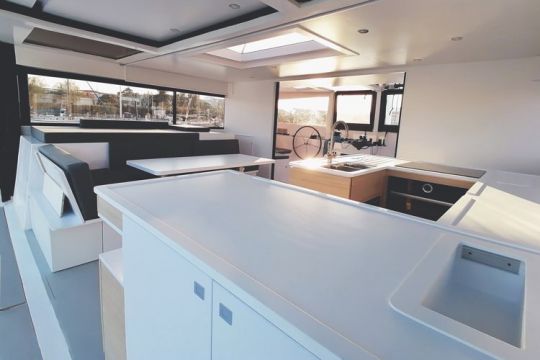
What about electric propulsion?
Indeed, this catamaran is delivered with 2 electric motors (2 x 20 kW as standard and 2 x 24 kW as an option), an 18 kW generator (and a second one as an option) and a 560 Ah lithium battery pack as standard. We also have a very large surface of solar panels even if the owner of the first model chose not to cover all the deckhouse, preferring to reserve a part for sunbathing. But we also have panels on the side decks for a total of 3500 W.
Our first tests showed us that it takes 10 kW (2x5kW) to move forward at 6 knots, but that this consumption almost doubles if we want to reach 7 knots (18 kW) and the curve increases exponentially (28 kW for 7.5 N and 48 kW for 8.5 N).
For the recharge, we have in addition to solar panels, the possibility of wind turbines and especially the hydrogeneration. When sailing under sail, the propellers turn and we can choose between 3 positions of hydrogeneration depending on the brake we accept to support. Indeed, while recharging, the propellers create necessarily a slowing down of the sailboat.
We are very proud of our Boat Management System. It's an application we developed in-house that manages the consumption of all the electrical equipment on board. The data is displayed near the helm on the Garmin screen. Eventually, this application will manage the navigation, we will be able to give it the desired route and depending on the wind and sunshine and the choice to arrive with an empty or full battery pack, the software will advise us on the possibilities of recharging.
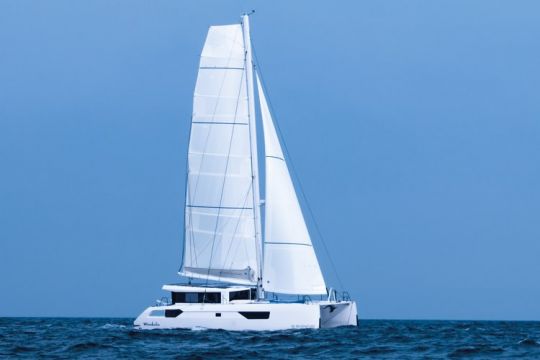
What is the program afterwards?
Because of the health crisis, the first Windelo 50 to be sailed should remain in the yard for 6 months before being handed over to its owner. This will allow us to test it thoroughly and also to present it to the press and to prospects. Today we launched the production of the Windelo 54. It will be the big brother of the 50 with longer hulls and a longer cradle. And to complete the range, we have made good progress on the design of the Windelo 47, for which we already have some interesting touches. So the adventure continues, even if we have to admit that the COVID does not make our life easier.
